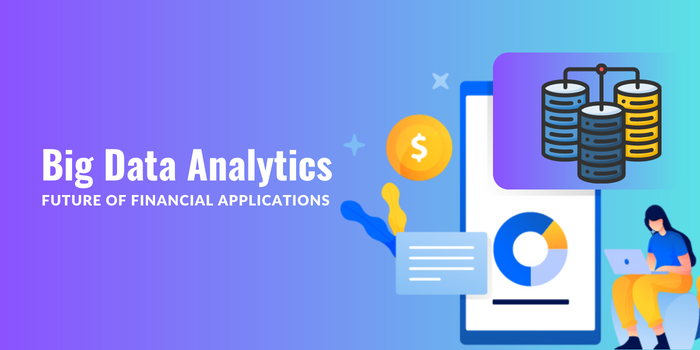Data has long been a key component in the financial sector’s decision-making process, but in recent years, the emergence of big data analytics has fundamentally changed how financial institutions handle, interpret, and use data. Big data analytics are revolutionizing the financial industry by offering new insights, reducing risks, and boosting profitability. Big data analytics in banking has a bright future ahead of it, with even more improvements and game-changing possibilities as technology develops.
Understanding How The Future of Finance Could be Shaped by Big Data Analytics?
Quantum Leap in Data Processing
Big data analytics in the financial sector will benefit from quantum advances in data processing technology. Financial institutions can now handle enormous information and carry out complex computations at previously unheard-of rates thanks to the introduction of quantum computing, creating new opportunities for sophisticated risk management and real-time decision-making.
Artificial Intelligence and Machine Learning Synergy
By combining big data analytics with artificial intelligence (AI) and machine learning (ML), the financial industry will undergo a revolution. The ability of AI-powered computers to analyze enormous amounts of data, spot trends, and make precise forecasts has led to the development of more intelligent and effective financial services.
Highly Personalised Financial Services
Big data analytics services will allow financial institutions to provide their clients with highly tailored services. Institutions can modify their products to better satisfy and retain customers by examining customer behavior, spending habits, and financial aspirations.
Improved Fraud Detection and Security
In the financial industry, big data analytics will improve cybersecurity and fraud prevention measures. Advanced analytics will continuously track transactions, spot odd patterns, and take immediate action in the event of a threat, protecting financial institutions and their clients.
Real-time Data Analytics
In the financial sector, real-time data analytics will be standard practice. Financial institutions can make quick choices based on the most recent market data thanks to technologies like in-memory computing and data streaming, ensuring agility and a competitive edge.
Integration of Alternative Data
In the future, financial institutions will progressively include alternative data sources into their analytics models, such as social media, satellite imaging, and IoT data. Additional information for risk evaluations and investment strategies will be provided by this integration.
Blockchain and Distributed Ledger Technology
In the future, financial institutions will progressively include alternative data sources in their analytics models, such as social media, satellite imaging, and IoT data. This integration will provide additional information for risk evaluations and investment strategies.
Predictive Analytics for Economic Forecasting
Financial institutions will be able to utilize the power of predictive analytics for economic forecasting thanks to big data analytics. Institutions can forecast market trends and make better decisions by analyzing large economic statistics.
Regulatory Compliance and Reporting
Big data analytics will enable financial firms to streamline regulatory compliance and reporting in the future. Automation of compliance procedures can ease institutional workloads and increase accuracy.
Improved Client Experience
Significant customer experience improvements will be driven by big data analytics. Financial institutions will use data insights to expedite client interactions, improve service quality, and provide tailored suggestions.
Evaluate Social and Environmental Investments
Financial organizations will use big data analytics to evaluate the social and environmental effects of investments. Data-driven insights on sustainability and corporate social responsibility will complement responsible investing.
The Financial Impact of Big Data Visualisation
Simplifying Complex Data
It can be difficult for analysts to analyze raw data and trends because financial datasets are sometimes large and complex. These complex datasets are transformed using big data visualization techniques into simple visual representations that are easy to understand, including charts, graphs, and dashboards. Professionals can easily understand patterns and trends because of this simplicity, which helps them make wise decisions.
Real-time market monitoring
Real-time market monitoring is crucial because of the dynamic nature of the finance sector. Using big data visualization technologies, analysts can follow financial indicators and market trends in real-time. These visualizations give financial organizations a competitive edge by making it easier to spot new trends, market swings, and potential threats right away.
Interactive Insights
Interactive visualization approaches enable users to engage with the data, allowing them to drill down into particulars and adjust perspectives as necessary. By allowing analysts to examine correlations, run scenario studies, and comprehend the underlying data better, they may develop financial strategies that are more reliable.
Detecting Fraud and Anomalies
‘Big Data’ The use of visualization techniques can help identify irregularities and fraudulent behavior in financial transactions. Financial institutions are better able to act quickly and reduce potential losses from fraudulent operations thanks to visualization tools that help identify strange patterns, outliers, and suspicious behavior.
Portfolio Optimisation and Risk Management
In the realm of finance, portfolio optimization, and risk management are crucial. The effective visualization of risk profiles, correlations, and portfolio diversification is made possible by big data. Asset managers are given the tools they need to manage portfolio risks and make wise investment choices thanks to these insights.
Analyzing client behavior is important for financial organizations because it helps them provide individualized services. Techniques for big data visualization aid in the analysis of customer information, including transactional patterns, preferences, and demographics. Offering financial products that are specifically suited to the needs of each consumer is possible with the help of these insights.
Techniques for Big Data Visualisation in Finance
Time Series Analysis
Time series charts provide data with a temporal visual representation, enabling analysts to see trends, seasonality, and cyclical patterns in financial data.
Heat Maps
Heat maps use color gradients to visually represent data and assist in identifying regions with high and low activity or concentration. Heat maps are a tool used in finance to illustrate risk exposure, market performance, and asset allocation.
Scatter Plots
Scatter plots show relationships and correlations between variables by representing data points on a two-dimensional graph. Financial analysts can make better investment decisions by using scatter plots to evaluate the relationship between two financial variables.
Tree Maps
Tree maps show hierarchical data as nested rectangles, with the size of each rectangle indicating the magnitude of the data. With the help of tree maps, financial professionals may see how a portfolio is put together and how the assets are distributed throughout various markets.
Bubble Maps
Tree maps show hierarchical data as nested rectangles, with the size of each rectangle indicating the magnitude of the data. With the help of tree maps, financial professionals may see how a portfolio is put together and how the assets are distributed throughout various markets.
Geographic Mapping
Financial data is visualized using geographic locations. The performance of local markets, customer distribution, and worldwide economic trends can all be studied using this method.
Conclusion
Big data visualization methods are now an essential part of financial decision-making. The potential of Big Data Visualisation will increase as technology develops, improving the financial industry’s capacity to deal with uncertainty and prosper in a world that is becoming more and more data-driven.


